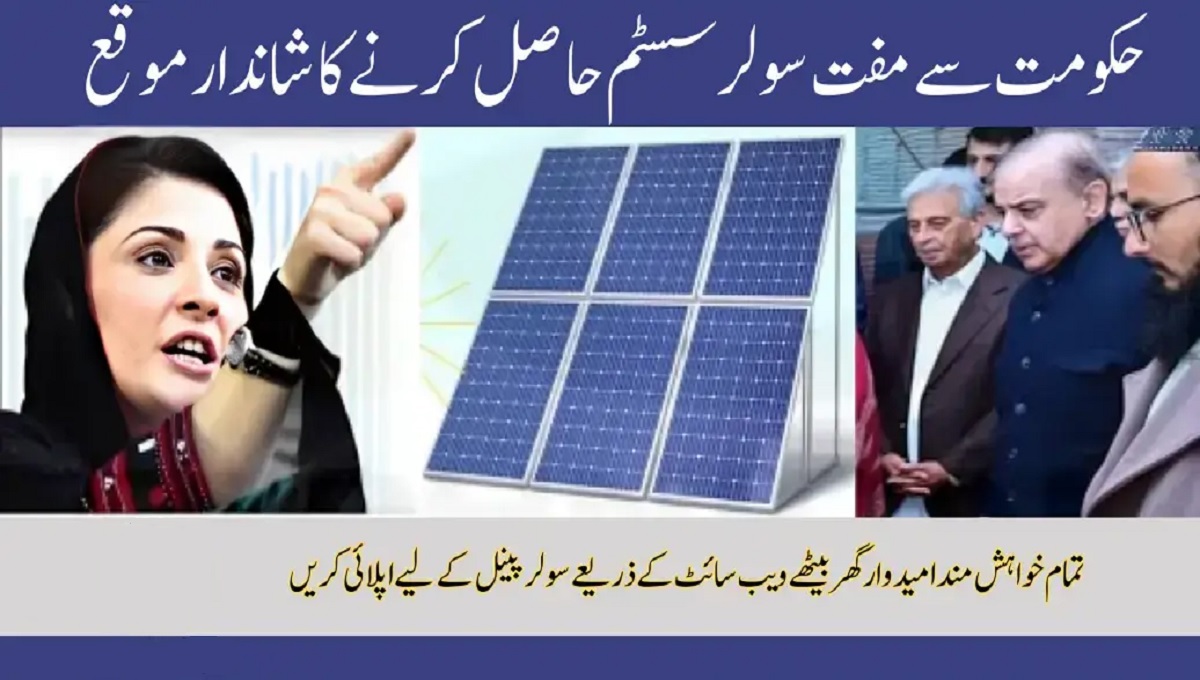punjab solar scheme 2024: The punjab solar scheme 2024 is expected to be a continuation or enhancement of the state government’s efforts to promote solar energy adoption among farmers, businesses, and residential consumers in Punjab. These initiatives typically aim to reduce dependency on conventional power sources, lower electricity costs, and promote environmental sustainability.
Key highlights of such schemes often include(punjab solar scheme 2024):
- Subsidies for Solar Panels: The Punjab government, along with central government support, offers subsidies for installing solar panels, especially on agricultural lands. This reduces the upfront cost for farmers and other consumers.
- Solar Pump Sets for Farmers: Solar-powered pump sets are distributed to farmers to help in irrigation. These pumps reduce electricity consumption and costs, especially in rural areas.
- Grid-Connected Rooftop Solar Program: This program encourages urban and rural households to install solar panels on rooftops, allowing them to generate power for self-consumption and sell excess power to the grid.
- Net Metering: Punjab’s solar policies often include net metering, allowing consumers to sell surplus power generated from solar installations back to the electricity grid and receive credits on their bills.
- Target Goals: punjab solar scheme 2024 has set ambitious targets for increasing solar power generation capacity as part of its renewable energy goals, focusing on both large-scale solar plants and decentralized, smaller installations.
- Focus on Renewable Energy Parks: The government plans to set up large-scale solar energy parks and invest in infrastructure to promote solar energy production across the state.
The details of the Punjab Solar Scheme 2024 may be outlined in government notifications, and the scheme might involve new incentives or targets as part of India’s broader push for renewable energy.
You can also read: 2 Lakh Free Solar By Punjab Government For Free Of Cost Poor People 2024

You can also read: Check Eligibility for Free Solar Panel Scheme 2024
Registration process (punjab solar scheme 2024):
The application or registration process for the Punjab Solar Scheme 2024 typically involves several steps depending on the specific component of the scheme you are interested in, such as solar pump sets for farmers, rooftop solar installations, or large-scale solar projects. Here’s a general guide to the process:
1. Identify the Specific Solar Scheme
- First, determine which part of the Punjab Solar Scheme you want to apply for:
- Solar pumps for agriculture
- Grid-connected rooftop solar punjab solar scheme 2024
- Solar park development
- Off-grid solar systems
2. Visit the Official Website
- Go to the Punjab Energy Development Agency (PEDA) website, which is the nodal agency for implementing solar energy projects in Punjab. The website will have the latest information on ongoing schemes, eligibility, and registration processes.
- Website: PEDA for punjab solar scheme 2024
3. Check Eligibility Criteria
- Review the eligibility requirements for the specific scheme. For instance, rooftop solar schemes may require that you own a house or a commercial building with a sufficient roof area, while solar pump schemes may require you to be a registered farmer. punjab solar scheme 2024
4. Online Registration/Application Form
- Online Process: If the scheme offers online registration, follow these steps:
- Visit the PEDA website or the National Portal for Solar Applications (such as the Ministry of New and Renewable Energy (MNRE) website).
- Look for the “Solar Scheme Registration” or relevant section.
- Fill out the required details such as personal information, location of the installation, type of solar system, and subsidy details.
- Upload any required documents, which may include:
- Proof of identity (Aadhar, Voter ID, PAN, etc.)
- Proof of residence or land ownership
- Bank account details
- Electricity bill copy
- Technical specifications of the solar system (if applicable)
- Offline Process: In some cases, applications may need to be submitted through local PEDA offices or designated nodal agencies. You may need to:
- Obtain an application form from a local office.
- Submit the completed form along with necessary documents at the nearest PEDA or district energy office.

5. Site Inspection (if required)
- For larger installations like rooftop solar or solar parks, a site inspection may be conducted by the authorities to ensure that the proposed site meets the technical requirements.
6. Approval and Subsidy Processing
- Once the application is approved, the installation of solar systems may be initiated by authorized vendors.
- For schemes offering subsidies, the subsidy amount is usually credited directly to the beneficiary’s account or paid to the solar installation company, reducing the total installation cost for the consumer.
7. Net Metering Registration (for Rooftop Solar)
- If applying for grid-connected rooftop solar, you will also need to apply for net metering with your local electricity distribution company (DISCOM). This involves:
- Submitting an application for net metering.
- Installation of a net meter to track the electricity exported to and imported from the grid.
8. Final Verification and Installation
- After approval, the solar installation is completed by an accredited vendor.
- Post-installation, a verification is conducted by the relevant authorities to ensure the system is functioning properly and in compliance with the scheme’s terms.
9. Monitoring and Benefits
- After installation, you can start benefiting from reduced electricity costs, potential earnings from selling excess electricity back to the grid (for rooftop solar), and any operational incentives under the scheme.
Important Documents Typically Required:
- Proof of Identity (Aadhaar, PAN, etc.)
- Property ownership documents (for rooftop solar)
- Bank account details (for subsidy transfer)
- Agricultural land ownership (for solar pumps)
- Electricity bill punjab solar scheme 2024
You can also visit your nearest PEDA office or contact their helpline for any assistance or clarification related to the scheme.
You Can aAso Read: KPK Solar Scheme Apply Now Before Last Date Easy Method 2024
Conclusion
In conclusion, the punjab solar scheme 2024 offers a significant opportunity for individuals, farmers, and businesses to adopt renewable energy solutions through various subsidies and support mechanisms. By following the outlined registration process, applicants can benefit from reduced energy costs, sustainable energy use, and potential earnings from surplus electricity generation. Whether you’re interested in solar pumps for agriculture, rooftop solar systems, or large-scale projects, timely application and adherence to eligibility criteria are key to making the most of this initiative. For further details, the Punjab Energy Development Agency (PEDA) serves as the primary point of contact.

FAQ’s
Who is eligible to apply for the punjab solar scheme 2024?
Answer: Eligibility depends on the specific component of the scheme. Farmers can apply for solar pumps, residential property owners can apply for rooftop solar systems, and businesses or large-scale developers can participate in solar park projects. Applicants must meet the general requirements such as ownership of land or property, having access to grid electricity (for rooftop solar), and fulfilling financial eligibility for subsidies.
How can I apply for the Punjab Solar Scheme 2024?
Answer: Applications can be made online through the Punjab Energy Development Agency (PEDA) website or offline at PEDA offices. The process involves filling out a registration form, submitting necessary documents, and following the approval process, which may include site inspections.
How much can I save by installing a rooftop solar system?
Answer: Savings depend on the size of the solar installation, energy consumption, and grid connection. Typically, rooftop solar systems can reduce electricity bills significantly, and through net metering, users can earn credits for surplus electricity sent to the grid.
What is net metering, and how does it work?
Answer: Net metering allows users with solar installations to export excess electricity to the grid and receive credits on their electricity bill. When the user’s solar panels generate more electricity than consumed, the excess is sent to the grid, reducing future energy costs.
What documents are required for the application?
Answer: Common documents required include:
1.Proof of identity (Aadhaar, PAN, Voter ID)
2.Proof of property ownership (for rooftop solar)
3.Electricity bill copy
4.Bank account details (for subsidy transfer)
5.Land ownership documents (for farmers applying for solar pumps)

